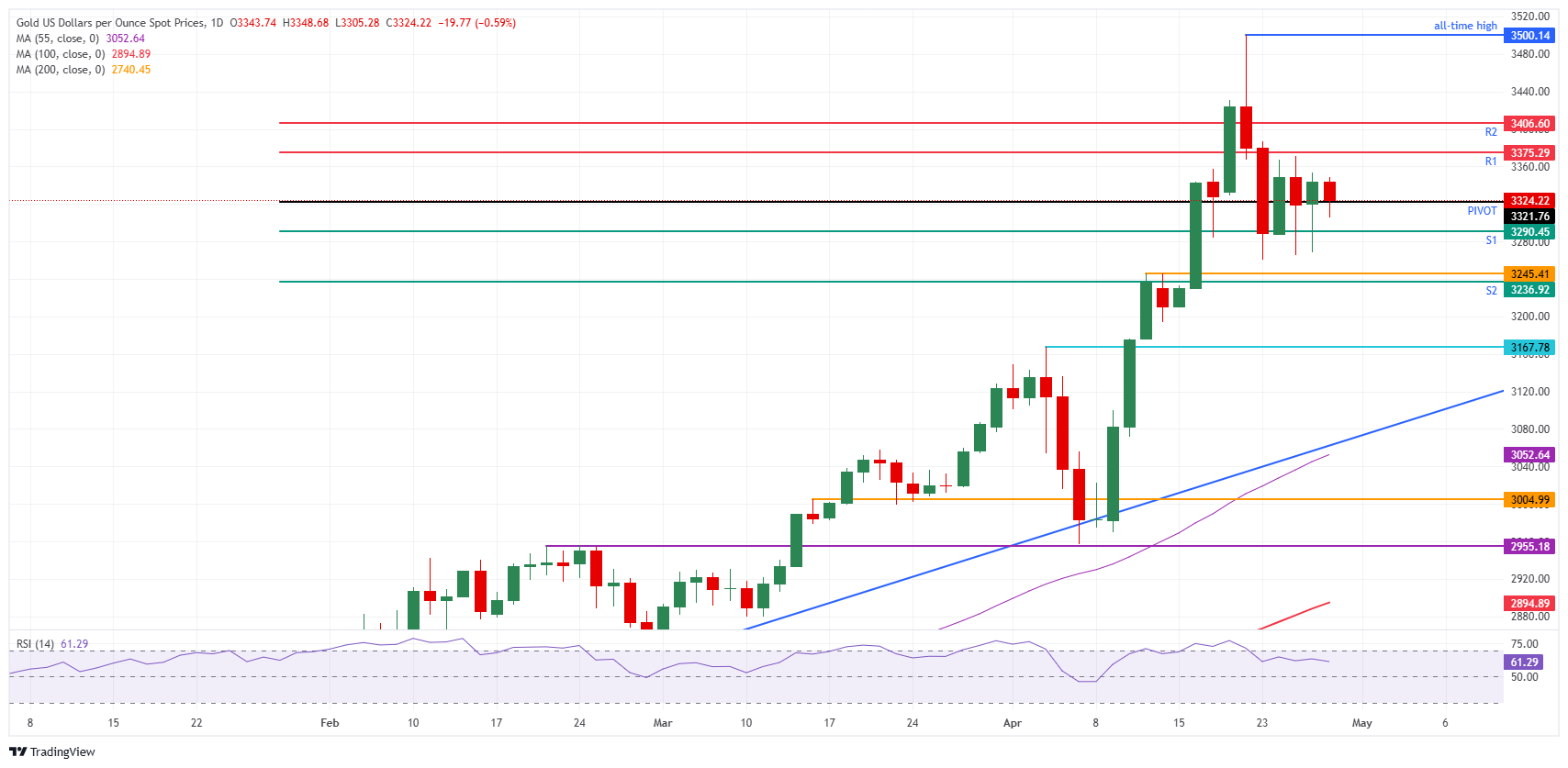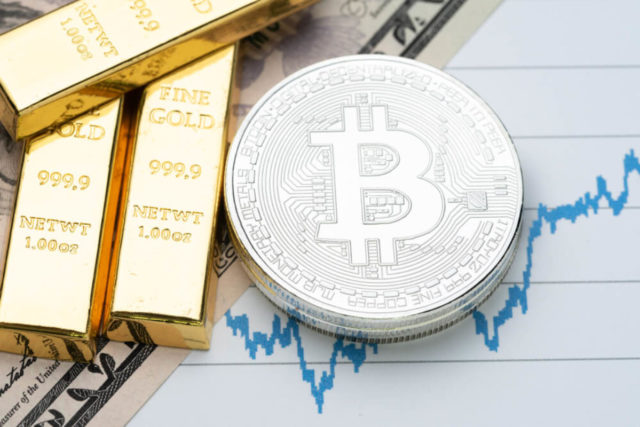- The price of gold faces a reduction in positioning with expectations that US president Trump will relieve automotive tariffs.
- The operators focus even more on the key economic data of the US that could determine the trajectory of Fed rates.
- Although the bearish elements begin to accumulate, the operators still advise to maintain gold positioning.
The price of gold (Xau/USD) is quoting laterally in a wide consolidation phase, currently quoting around $ 3,313 at the time of writing on Tuesday. The consolidation occurs as operators and markets adjust their positioning in the precious metal before a possible announcement of the US president Donald Trump about car tariffs. The rumor in the markets is that Trump will relieve automotive tariffs, which would reduce the demand for gold and relieve commercial tensions, says Bloomberg.
US economic data They will be the second engine this week, which will become important after the manufacturing activity index of the Texas Federal Reserve. The measure, widely followed, was significantly weakened as the participants expressed their current feeling with words such as “chaos” and “madness”, to describe the turbulence caused by Trump’s tariffs, mentioned the Dallas Fed report, according to Bloomberg.
Daily summary of market movements: trade agreements will be announced
- The US Treasury Secretary, Scott Besent, told CNBC on Monday that the US has put China waiting for now while looking for commercial agreements with between 15 and 17 other countries, while indicating that it depends on Beijing to take the first step to display the tariff fight, reports Reuters.
- On Monday, the manufacturing business index of the Dallas Fed for April fell to -35.8, coming from -16.3. The negative fall of the feeling index leads to the indicator to levels not seen since the pandemic occurred, reports Reuters. This could be one of the data points this week, together with the next Gross Domestic Product (GDP) of the US for the first quarter that will be published on Wednesday and the Non -Agricultural Payroll Report (NFP) on Friday, so that the Federal Reserve evaluates its policy decision for the May 7 meeting.
- China is responding strongly against the US with the People’s Daily, the flagship newspaper of the Chinese Communist Party, saying in a comment on Tuesday morning that the US should stop their misconduct to impose tariffs. Foreign Minister Wang Yi also said that if the nations choose to remain silent, commit and retreat, it will only lead to thugs to make more progress, Bloomberg reports.
Technical analysis of the price of gold: a seismic movement could precede
Keep your coverage or not maintain it, that is the issue? Clearly, the gold rally is stagnating and begins to show signs of fatigue with the operators taking profits and reducing their exhibitions as more and more holders arise that the Trump administration is beginning to reduce its aggressive regime of tariffs, for example, with exemptions of car parts. However, can the US loosen so much if your main competitor and reason for these tariffs, China, is not willing to sit at the table?
The daily pivot point at $ 3,322 has been tested this morning, although, for now, it tries to maintain the price action. From there, it is quite a stretch to reach $ 3,375 before reaching resistance R1. R2 resistance at 3,406 $ is an almost implarable level to reach this Tuesday, since this consolidation is not yet ready for a breakout.
At the bottom, the S1 support is providing a mattress at $ 3,290. Below, the key technical floor about $ 3,245 (maximum of April 11) comes into play. Finally, S2 support at $ 3,236 should prevent any additional drop towards the key level at $ 3,167 (maximum of April 3).

Xau/USD: Daily graphic
Commercial War between the US and China Faqs
In general terms, “Trade War” is a commercial war, an economic conflict between two or more countries due to the extreme protectionism of one of the parties. It implies the creation of commercial barriers, such as tariffs, which are in counterbarreras, increasing import costs and, therefore, the cost of life.
An economic conflict between the United States (USA) and China began in early 2018, when President Donald Trump established commercial barriers against China, claiming unfair commercial practices and theft of intellectual property by the Asian giant. China took retaliation measures, imposing tariffs on multiple American products, such as cars and soybeans. The tensions climbed until the two countries signed the Phase one trade agreement between the US and China in January 2020. The agreement required structural reforms and other changes in China’s economic and commercial regime and intended to restore stability and confidence between the two nations. Coronavirus pandemia diverted the attention of the conflict. However, it is worth mentioning that President Joe Biden, who took office after Trump, kept the tariffs and even added some additional encumbrances.
Donald Trump’s return to the White House as the 47th US president has unleashed a new wave of tensions between the two countries. During the 2024 election campaign, Trump promised to impose 60% tariff particularly in investment, and directly feeding the inflation of the consumer price index.
Source: Fx Street
I am Joshua Winder, a senior-level journalist and editor at World Stock Market. I specialize in covering news related to the stock market and economic trends. With more than 8 years of experience in this field, I have become an expert in financial reporting.







